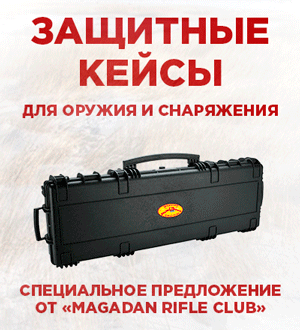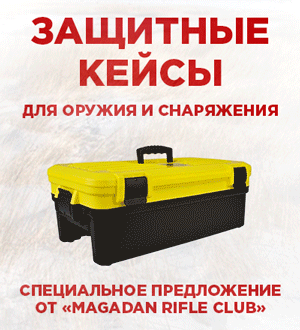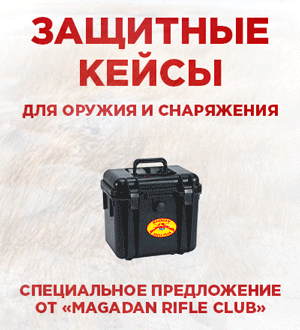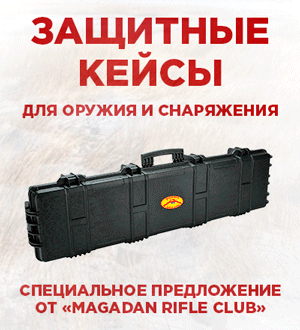Posted on February 15, 2018
Preparation for winter hunting
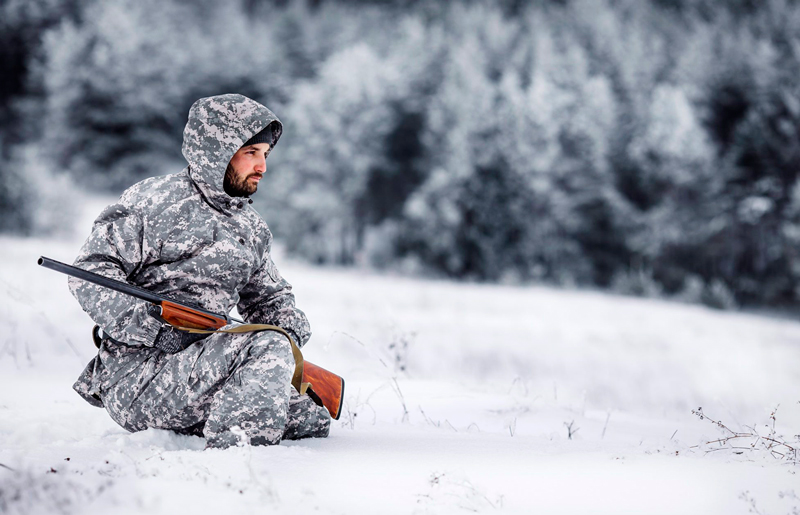
Any hunting season requires careful preparation, and only winter – even more so. After all, the fees for the upcoming hunt are no less fascinating than walking in the forest and fields with a gun in hand.
Hunting brings joy and pleasure in the event that a person is not distracted by annoying misunderstandings in the form of improperly fitted and not lubricated skis in time or uncomfortable clothes. Therefore, it is necessary to collect, prepare and neatly put in the backpack or duffel bag those things, without which in winter hunting simply can not do.
Preparing weapons for winter hunting
The main thing on any hunting is the weapon, it is necessary for him to give the first and the most careful attention, beginning preparations for the winter season.
A gun, perfectly lying in the hands and with a well-fitted butt, in autumn, when the hunter is dressed in light clothing, will not be so convenient for shooting offhand in the winter, when a man is wearing a fur or cotton jacket.
First of all, you need to replace the rubber shock absorber in time. A good hunter has usually two: for winter – thin (10-15 mm) and for hunting in summer – thick (30-40 mm). Both shock absorbers can be installed using the same screws or use separate attachments that have a locking spring, which is often practiced by experienced hunters. And you can put a shock absorber of the required thickness in a rubber or leather “galosh”, matched and fitted to the butt of the rifle.
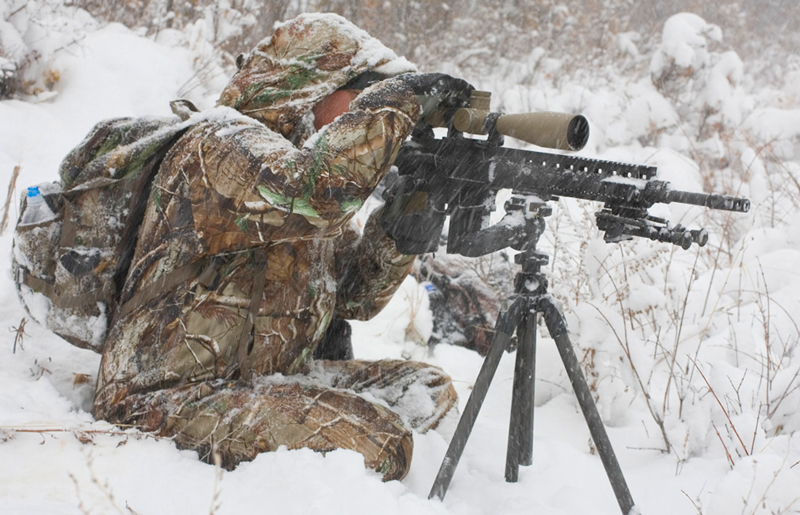
Many will say that these are not so necessary excesses, but a slip on the beast that suddenly appeared on the road or running across the road, and especially over the bear that popped out of the den, can cost a person health, and sometimes life.
The gun in the winter can give a misfire when shot and in the event that in its locks for a long time did not change the lubricant. Over time, it becomes viscous, and in severe frost thickens even more, which leads to malfunctioning of the weapon. By their inexperience, many hunters themselves are trying to open locks to replace lubricants, turning the screws off with the wrong tool, damaging them and disfiguring the appearance of the gun. It is best to go to the workshop beforehand and give weapons to specialists with experience and skill, as well as the right tool and using special oils for lubrication that do not become dense for a long time. If the success in winter hunting depends on the correct and timely preparation of the gun, then clothes, shoes and hats, selected not by season, can cause frostbite or inflammation of the lungs.
Footwear for winter hunting
Even in winter, you can easily soak your feet, which is very dangerous in severe frost. Sometimes under the early and abundantly fallen snow, which covers the wet earth, the water does not freeze all winter. Therefore, for hunting at this time, it is worth buying polar boots, in which the sponge is spongy rubber, or thin rubber galoshes (or you can make them from the car camera), so that if necessary, protect them with felt boots.
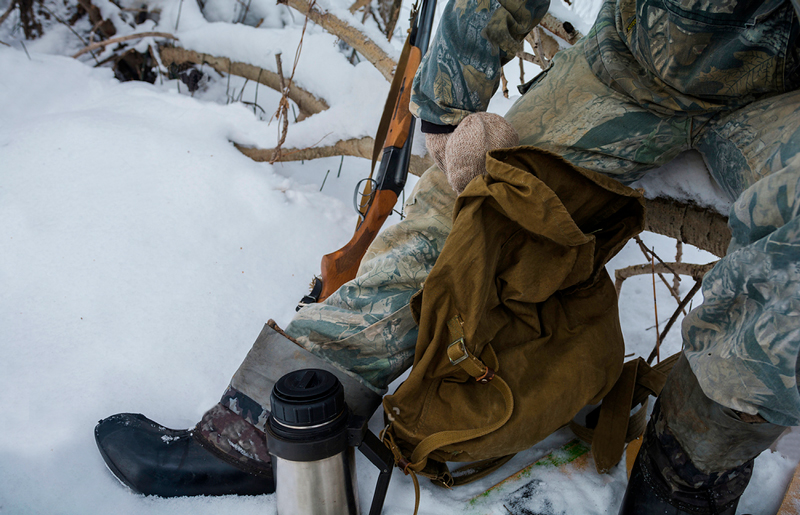
In extreme cases, you can do with ordinary rubber boots, which are a few inches larger than the foot, and provide them with a warm insoles of felt. Before shoes, you need to wrap your feet with woolen cloths or put on two pairs of thick socks.
For winter hunting, it is better to walk in felt boots, since they are much warmer, more comfortable and easier to attach skis to them.
Outerwear for winter hunting
Clothes for hunting in winter should be selected so that it was warm, comfortable, easy and it did not hamper the movement when shooting. The most optimal option may be an inexpensive and simple kit consisting of cloth trousers (such as soldiers’ trousers), cotton pants and the same jacket, preferably khaki.
It is necessary to take into account that with age in the body there are changes, extra pounds appear, as a result, when walking for a long time, and even for “bumpy” terrain, a person sweats profusely. Of course, if he hunts alone, the load can be periodically reduced, reducing the pace of walking or stopping for 10-15 minutes for a respite. But in collective hunting, when there is a moose, wolf or wild boar, it is necessary to adjust to those who are stronger and younger. As a result, the hunter stands up with his back from the sweat, and in a few minutes a chill breaks through him, and he starts shivering from the cold and stomping with his feet to keep warm. As a result, you can frighten away the beast, spoiling the hunt for the whole team, and even catch a cold.
To avoid this situation, it is better to stock up on two sets of clothes. You can go through the woods in a cloth jacket or a cotton quilted jacket, and before stopping on a room under it you need to wear a warm sweater or a sleeveless shirt made of fur. The latter can be sewn by the dog or sheep’s skin, or rather from a few skins of a rabbit or rabbit, and the top is sewn with a light natural cloth, such as satin. The waistcoat will turn out to be light and warm, and it will take quite a bit of space in the backpack.
An elderly hunter is advisable to have a set of clothes for each hunting season: two warm sweaters, two waistcoats – of fur and a thin knitted and jacket-storm. In autumn it is enough to put on a sweater and a storm, in the winter under a jacket both sweaters, and in a severe frost all complete set. Then the hunter will be warm and comfortable, and clothes will not become a hindrance when shooting. In winter hunting, you can not do without a wait, when you need to stay in one place for a long time, sometimes during the whole night. In this case, she will get a sheepskin coat or sheepskin coat, but they should be worn after arrival to the place, so that after sweating during walking, then do not freeze. For hunting in the winter season, it will not be superfluous to have a white camouflage dressing gown, and the same suit with a hood. They should be so spacious that they can be easily put on any warm clothes.
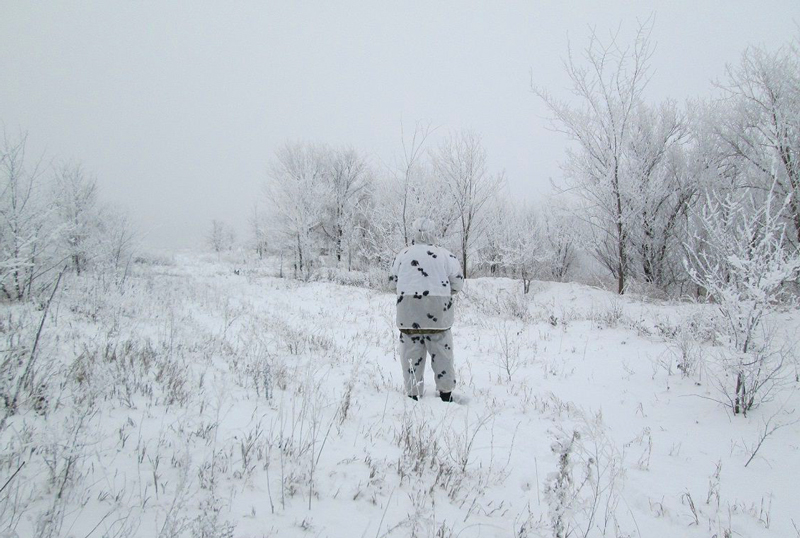
The masking gown is sewn similarly to surgical medical clothing. The leggings of suit trousers should be so wide that they can be worn over the boots and removed without taking off their shoes. Erasers at the bottom of the trousers tightly fit shoes, protecting it from falling snow inside. It is from such trifles that the comfort and comfort of the hunter depends.
To hunters with excess weight and those who are more than 50 years old, it is desirable to have two headdresses. When walking, even in severe cold, you can use a tight knitted hat, like skiers, and by standing on the number, put a hat on your head with a fur hat, or instead of a cap, or directly on it. Similarly, people with hypertension should also be treated, otherwise overheating or hypothermia will cause severe headaches.
How to protect your hands in winter hunting
A hunter, especially in winter, needs to take good care of his hands, because it depends on them in many ways whether a shot will be successful. They should always be warm, otherwise they will hardly use their frozen arms to use their weapons. To protect your hands from the cold, you can take fur gauntlets, which experienced hunters sew up to a string or braid and hang on the neck. Thus, the mittens are not lost and they do not have to be hidden in the pocket, besides, while on the number the mitten removed for the shot does not fall and will not frighten the beast. Some lovers of winter hunting wear a mitt on the right hand with a hole for the index finger, and when shooting it is not removed. Maybe it’s convenient, but not everyone can get used to such mittens. And other hunters under the mittens put on woolen gloves and shoot at them.
Earlier it was possible to buy special clutches for the hunt, which were also fixed on the strap and hung around the neck. They can be done by yourself. To do this, two hare or rabbit skins, taken in the form of a stocking, are attached to each other with sewn ends and join, and from above are lined with a cloth. With such a clutch, the hands will always be warm and ready to shoot even in severe frost.
Preparation of skis for winter hunting
For winter hunting, skis are needed, which must be strong, light and correctly adjusted to the shoes, and also exactly match the weight and height of the hunter. The heavier a person, the greater the area of support, and hence the wider and longer skis. Available today for sale, skis are of two types: ordinary and veneer. Ideally, if the hunter has both, and others.
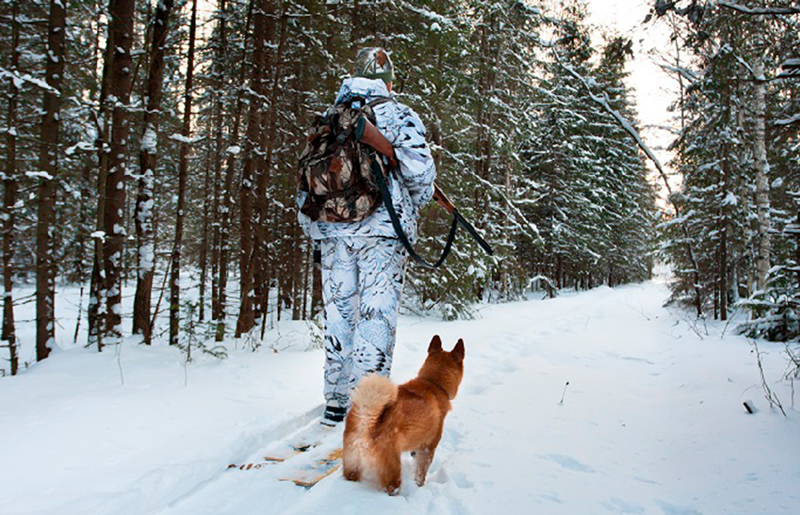
On veneer skiing, which has more support area, it is good to hunt alone, and it is better to take ordinary skis for collective hunting, since it will be more convenient to go along the ski tracks. Despite the lightness and strength of veneer skis, they are designed for people with a weight of up to 70 kg. Hunters, who have more body weight, will have to strengthen such skis themselves. Since under the weight of the first thing burst places near the cuts for belts, they need to be strengthened with a thin board of hard wood or strengthen a stronger support, applying it on the entire width of the ski and at a length of about 60 cm. Then the deflection of skis will decrease, and it will become easier to walk .
That the snow does not intend under the heel, this place is filled with a rubber thrust bearing. On the edges of rubber need to tightly nail or make edging of a metal strip, then the snow will not fall under the rubber. Attachments on skis can be replaced with ordinary ones or you can insert a belt made of thick material into the slots, and fasten the felt boots with an elastic rubber loop.
In advance it is necessary to pick up and purchase ski ointments, which will facilitate movement and protect from sticking snow. More about skiing for hunting, see our website in this article.
What to do with frostbite
- Remove cold and damp clothes.
- Turn the victim into blankets for gradual warming.
- Give a warm drink.
It is forbidden: with deep hypothermia with a condition close to death or unconscious, it is forbidden to rub the affected person, apply hot objects to the affected places, place it in a hot bath. Rapid warming can lead to death!
First aid in case of an adequate state of the patient being conscious with a general stable condition: warm the limb in a warm room, first rubbing it with a dry soft cloth. Then place the limb in a basin with warm water, gradually bring the water temperature to 40-45 degrees. If the pain passes and the sensitivity is restored, then wipe the limb dry, wear dry socks or gloves. The injured person should consult a surgeon. If the pain does not pass during warming, and even increases, and the limb remains pale and cold, then the victim is immediately sent to a specialist doctor.
There are a few simple rules that will allow you to avoid hypothermia and frostbite in a severe frost:
- Do not drink alcohol – alcoholic intoxication (however, like any other) causes a large loss of heat, at the same time, causing the illusion of heat. In addition, alcohol dulls sensitivity and a person may not understand when frostbite begins;
- do not smoke in the cold – smoking reduces peripheral blood circulation, and thus makes the limbs more vulnerable;
wear loose clothing – this promotes normal blood circulation. Outer clothing must be waterproof; - Do not go out to the frost without mittens, hats and scarf. The best option is mittens made of moisture-repellent and non-blowing fabric with fur inside. Gloves are made of natural materials, although comfortable, but they do not save frost. Cheeks and chin can be protected with a scarf. In shoes you need to put warm insole, and instead of cotton socks put on wool – they absorb moisture, leaving your feet dry;
- Do not wear metal (including gold, silver) ornaments in the frost – the metal cools much faster than the body to low temperatures, resulting in possible adhesion to the skin with pain and cold trauma, and the rings on the fingers make it difficult for the blood to circulate normally;
- Do not let the frostbitten place freeze again – it will cause much more damage to the skin;
- Do not remove the frost shoes with frostbitten limbs – they will swell, and you will not be able to put on shoes again. At the first signs of frostbite, you must immediately begin to warm the damaged part of the body, leave from the cold in a warm room and start very gently rub the affected area with a dry soft cloth. In no case can you rub the damaged area with snow or mittens: this further damages the skin;
- returning home after a walk in the frost, be sure to check the absence of frostbite in the limbs, back, ears, nose, etc. Frozen frostbite can lead to gangrene and subsequent loss of limb;
- if you have stalled a car away from a village or in an unfamiliar area for you, it is better to stay in the car, call for help by phone or wait for another car to pass along the road.
Always be watchful and careful! Have a good hunting!



